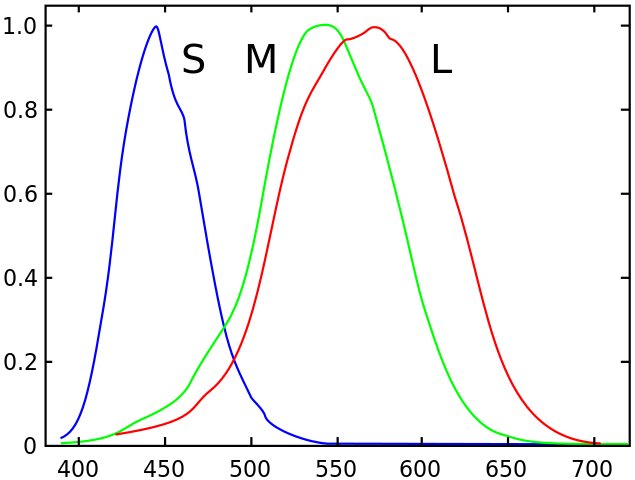Science
Related: About this forummarble falls
(57,080 posts)kedrys
(7,678 posts)This is by far the best explanation I've ever seen of why green stars aren't possible. Plus the host has a soothing voice and throws in a bit of philosophy every now and then. ![]()
Wounded Bear
(58,648 posts)Moebym
(989 posts)I'm going to have to check out this channel.
hunter
(38,311 posts)This is the Normalised responsivity spectra of human cone cells:

https://en.wikipedia.org/wiki/Trichromacy
Our fury little ancestors, living in the dark, lost two color receptors.
Great Apes like ourselves regained a shitty version of trichromacy in our evolution. It's really bad compared to the color vision of birds.
If we had the color receptors of birds we'd see an unimaginable range of colors when we looked up at the stars, including colors we'd probably call "green."

https://en.wikipedia.org/wiki/Tetrachromacy
Igel
(35,300 posts)Stars can have the peak wavelength clearly be "green" but given how we construct color that necessarily will appear white.
The flip side is where's white on the spectrum?
Some of my students miss this and have troubles with it, until you show them how a red light, a yellow light, and a blue light when overlapped on the wall appear white. Then tell them to take a magnifying glass to a computer monitor and look at how each pixel has three colors, and their perceived color depends on how bright each of the contributing colors is.
They get it wrong because they're used to mixing paints. Instead of additive colors, they're familiar with subtractive.
But they learn.
hunter
(38,311 posts)...isolating spectral lines of particular astrophysical interest.
Color images from the telescope are converted to the three colors most humans can see.
In nature the eye of the mantis shrimp has twelve separate color receptors.
The Bayer filters used in many electronic cameras are red, blue, and green. That's the most common color filter array. Images produced with filter arrays of other colors can be mathematically transformed into the usual RGB pixels of computer monitors and televisions or the CMYK schemes of color printing.
When a parrot looks at a color television the experience is probably a similar to what we experience when we look at a black-and-white television.
An ideal camera would record the wavelength of each photon it captured and an ideal computer monitor would reproduce that.
Our eyes capture only a crude approximation of actual colors. Our cameras and computer monitors don't have to be much better than that.
We live in amazing times when astronomical instruments can capture details the human eye cannot discern through the eyepiece of a telescope.